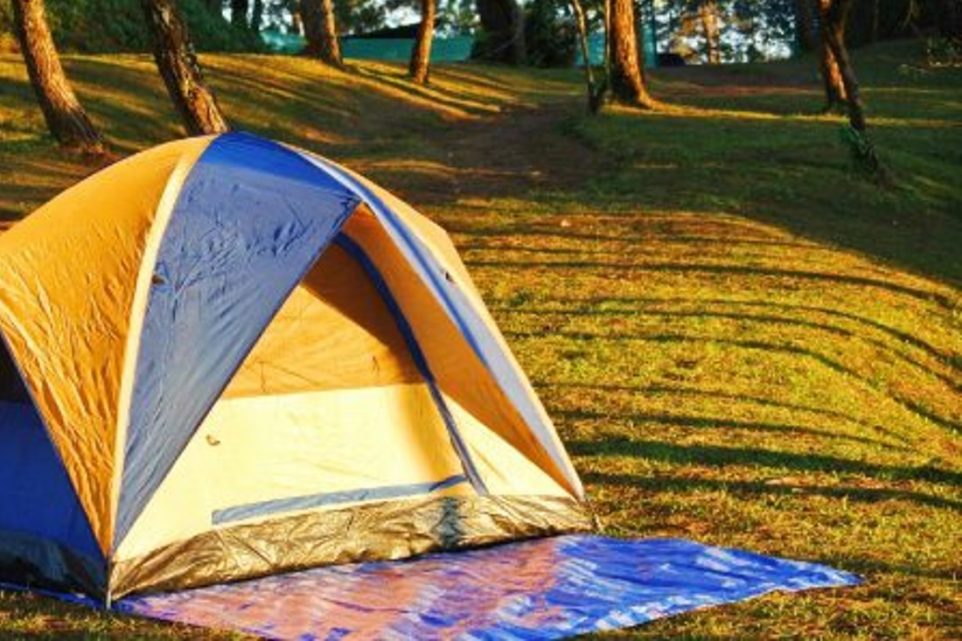Traditional vs. Pop-up Camping Tent: What’s the Difference?

Camping can be a great way to spend time outdoors, but when it comes to picking the right tent, you need to make sure you’re choosing the right one for your needs. This article will look at the difference between traditional and pop-up camping tents to help you pick the right one for you.
Whether you’re an experienced camper looking to upgrade your camping experience or just getting started, understanding the pros and cons of traditional and pop-up camping tents will help you make the best decision. We’ll review the key differences between them so you can make an informed decision.
Traditional Camping Tents
Traditional camping tents are usually constructed from dense, waterproof fabrics such as synthetic fiber cloth or canvas. They also come with poles that provide the structure and support for the tent. Traditional camping tents come in many shapes and sizes, such as dome-shaped, tunnel-shaped, A-frame-shaped, or cabin-shaped structures. These camping tents range from small single-person to large family tents that can sleep up to 10 people.
Pop-up Camping Tents
Pop-up camping tents are made from lightweight, waterproof materials such as nylon or polyester and feature flexible frames that provide structure and support. Pop-up camping tents usually come in a dome shape but are available in other options. Pop-up camping tents are usually much smaller than traditional ones and typically only fit two adults comfortably, but you can find larger sizes.
Pros and Cons of Traditional Camping Tents
Traditional camping tents are usually more durable than pop-up options due to their heavy materials and sturdier frames, making them better suited for long-term use or extended trips in various weather conditions. They also offer more headroom since their shape allows for taller walls, often making them feel more spacious inside.
Traditional camping tents are typically heavier and bulkier than pop-up ones, making them harder to transport and set up. You can purchase smaller versions that are lighter-weight if necessary. They also have more parts, so they can be more complicated to assemble than pop-up camping tents.
Pros and Cons of Pop-up Camping Tents
The primary benefit of a pop-up camping tent is its compact size and lightweight design, making it easy to transport and set up quickly at the campsite, typically taking less than 10 minutes. As a result, they are ideal for those who want to avoid carrying a large tent while hiking or biking to the campsite. Pop-up tents are small and lightweight when folded up, which makes them easy to carry.
Pop-up camping tents may not be as durable as traditional ones, making them better suited for shorter trips or milder weather conditions. Their lightweight materials are less reliable against extreme temperatures or heavy rain than other camping tents. Pop-up tents have more compact walls and ceilings, which may limit the headroom inside, making them feel cramped for larger groups or tent sizes.
Cost Comparison
Traditional Camping Tents
Prices vary depending on the size and brand but expect to pay at least $50-$100 for a basic traditional tent, while larger family-size tents will cost $200-$500 depending on quality and features included.
Pop-up Camping Tents
Prices also vary depending on size and features, but these tents cost around $50-$150 for a basic tent, while higher quality models with added features such as rainfly may cost upwards of $200 or more.
How To Choose the Right Tent
To choose the right tent for your camping trip, start by considering the type of trip you’re taking. A pop-up tent may suffice if you want to spend just one or two nights in one spot. A traditional tent is a more reliable option for extended trips lasting several days or weeks. Typical tents are built with sturdier frames and heavier materials that can withstand inclement weather conditions better than the lightweight pop-up tent design, which offers less protection and durability in harsh elements like wind, rain, and snowfall.
You will need a large tent if your group includes five or more people. A pop-up tent may suffice for two people with minimal gear storage requirements.
Consider the weather conditions you may encounter during your stay. Although both types of tents can provide sufficient protection from mild weather conditions like light rain and wind, traditional camping tents are better equipped to withstand harsh weather conditions such as heavy rain, high winds, and snowfall due to their heavier materials. It’s essential to consider this factor when choosing a tent, especially if inclement weather is expected during your stay.
Conclusion
Choosing between a traditional or pop-up camping tent depends on your needs and preferences. No matter what type of tent you choose, make sure it’s the right size for the number of people and the amount of gear you will be bringing and that it is made of high-quality, waterproof materials to provide the best protection against the elements. With the right tent, you’ll be on your way to an enjoyable and comfortable camping experience.
Your Adventure, Our Experience
At TheCampingList, our dedication to authenticity and reliability stems from our own adventures in the great outdoors. Our team, comprised of seasoned experts in hiking, camping, climbing, cycling, fishing, and hunting, rigorously tests every product and shares insights drawn from real experiences. This hands-on approach ensures our reviews and guides meet the highest standards of durability, functionality, and comfort. Moreover, our platform thrives on the rich contributions and feedback from our vibrant community of enthusiasts. We pride ourselves on delivering unbiased, educational content that empowers and informs your outdoor pursuits. Trust in TheCampingList for genuine advice and support, where we're all about enriching your journey, every step of the way.